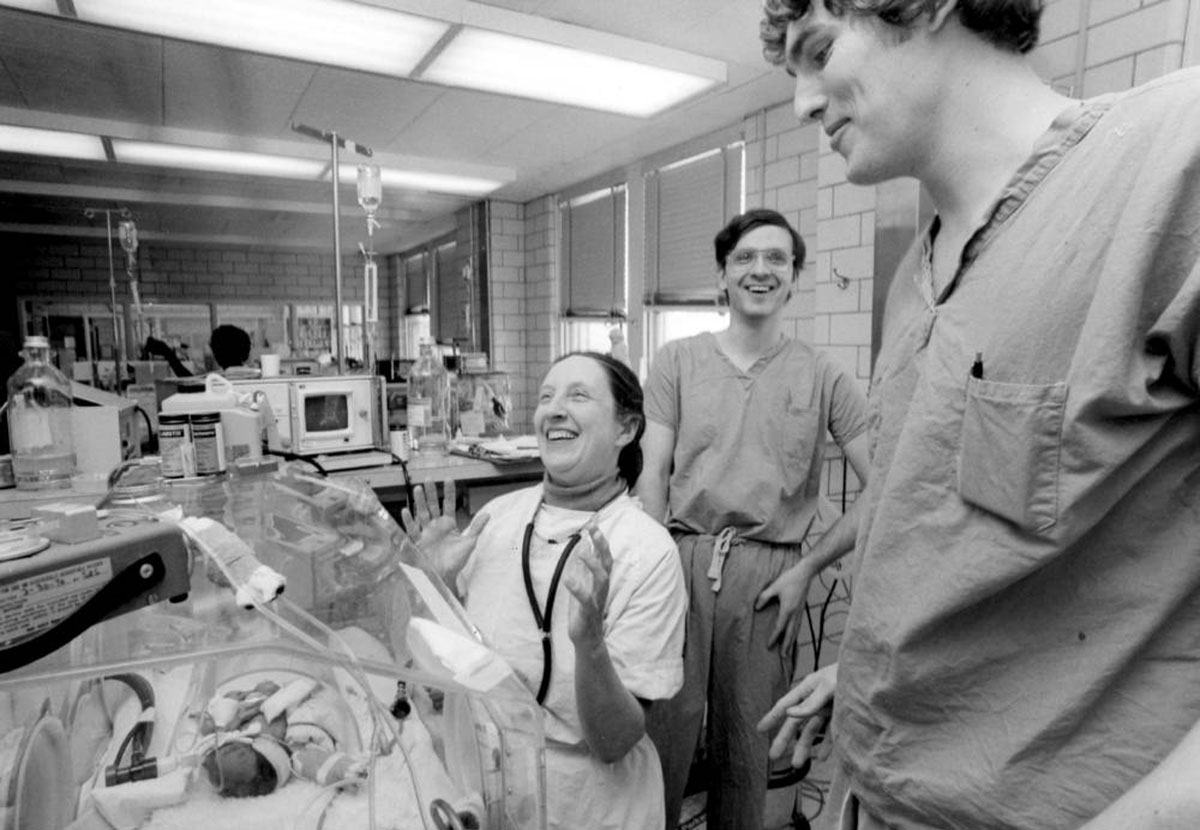Mildred Stahlman: Pioneer in Neonatal Intensive Care
Breakthrough
In 1961, there was no such thing as neonatal intensive care. Babies born prematurely with underdeveloped lungs died.
A National Institutes of Health-funded research project, led by Dr. Mildred Stahlman, was under way to determine what physiological changes occurred in babies as they develop from intrauterine life to the world outside. The NIH grant resulted in the addition of a laboratory adjacent to the nursery. At the same time, Stahlman obtained a prototype of a respirator that was the same type used for polio patients, but it was miniaturized and scaled down for premature baby size. In October of that year, the ongoing research project came face to face with life-or-death human need.

From patient to nurse
A baby girl had been born with severe hyaline membrane disease. Everyone agreed that unless something was done, she would die. With her parent’s permission, a bold experiment began.
Using the equipment, technology, and human knowledge that were on-hand, a medical breakthrough occurred. For the first time in the history of medicine, a premature baby was helped to breathe by the use of a respirator.
For five days, the fragile baby girl had her blood gases monitored, the pressures in her blood vessels and respiratory system, as well as EKG readings. This ability to monitor vital signs was a daily challenge to the researchers, who had to use modified equipment that was never meant for such a tiny body.
That first patient now leads a productive life, working as a nurse in the NICU.